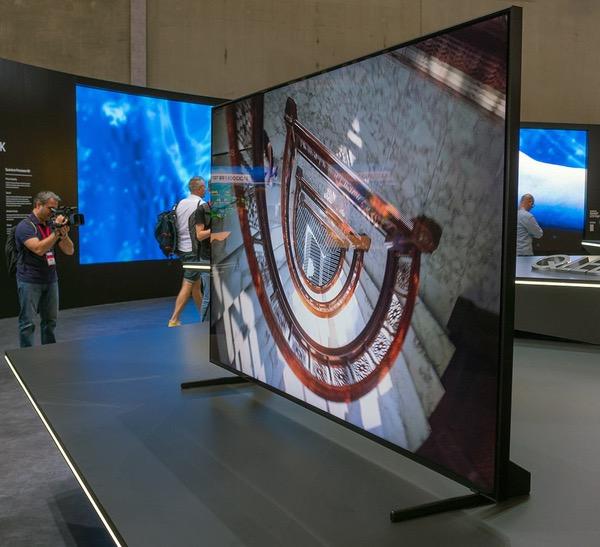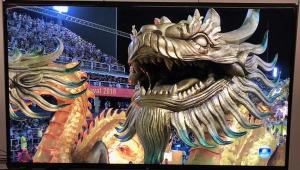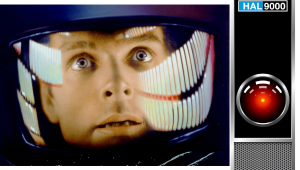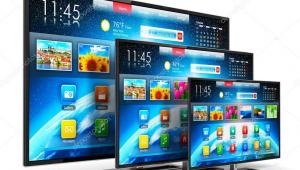Big TV or Projector?

Granted, both sets were 2020 models on closeout and not the latest 2021s. The Vizio was that company's best, or next to best, model for 2020, but the Samsung was in a 2020 budget range. But still, about $17 per diagonal inch for the Samsung and $34 per inch for the Vizio? I still remember a press junket back in the early aughts to a Japanese flat panel TV maker where they announced they were trying hard to bring the price down to $100/diagonal inch!
The advantages of a projector and screen are easy to summarize. We're still a long way from a flat screen TV big enough to satisfy videophiles who want the most imposing screen they can fit into the house (and afford!). It's also possible to hide a retractable projection screen when it's not in use, particularly if your screening room is an all-purpose space and not dedicated to home theater. A projection setup also offers the theatrical experience that no flat screen can as yet fully duplicate. And on a screen with modest gain, off center viewing is also better on a projected image than with most (but not all) flat screen TVs.
What advantages can a big flat screen TV offer? The most obvious is that no projector, even of theatrical quality and cost, can provide the full high dynamic range experience. They can offer enhanced dynamic range, but only a taste of what even a modest UltraHD TV offers. The better flat screen models also offer deeper blacks than even the best projectors. The features in a flat screen TV that enable great blacks (pixel level brightness control in an OLED and local dimming in an LCD design) are not yet possible with a projector. A good (expensive) laser-lit projector can shut down instantaneously to produce a full black screen, but cannot do so for an image mixing dark and light elements. Unless, as above, the projector uses a long-life laser (rare for home projectors) a replacement projection lamp is rarely less than $300 and often more. Replace it every 3000 hours or so and this adds up over time. (The video perfectionist will likely replace the lamp at no more than 1500 hours, as a lamp dims progressively with age and a manufacturer's lamp life is typically rated at half brightness unless noted otherwise). A jumbo TV won't have this concern, but if it develops a serious problem a trip to the trash is the likely outcome. The most common problem with a projector is a simple lamp failure and DIY replacement. If it needs more, a trip to the service facility is relatively easy. Try that with an 85-inch TV!
A flat screen set of any size can also be enjoyed with modest room lighting. Many (including me) still prefer serious movie watching on a flat screen set in total darkness. But the impact of discrete room lighting on the picture, while not totally irrelevant, will be far less noticeable than turning on the lights in a projection setup even with a light rejecting screen.
But can an 85-inch (diagonal, 16:9) TV offer the same impact as a 110-inch (diagonal, 16:9) projected image? At the same viewing distance, no. But what if you simply sit closer? From a viewing distance of 10-feet, that 110-inch screen subsumes a viewing angle (how much of your frontal vision the image fills) of 43.6-degrees. On the 85-inch TV screen from the same 10-foot distance this drops to 34.3-degrees, but at 9-feet it's 37.9-degrees and at 8-feet it's 42.2-degrees. The latter isn't that far from the 10-foot angle on the bigger projection screen. While many experts recommend viewing angles in the low 30s, projection enthusiasts often prefer wider than that for maximum immersion.
One other consideration that shouldn't be ignored is that the closer you sit to the screen the less cohesive the sound is, from multi-way speakers (with multiple, spaced drivers), at your seat. I wouldn't recommend setting closer than 8-feet from such speakers, unless they're specifically designed for close placement such as desktop use.





























































